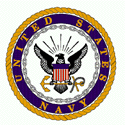

 Ralph E. Robinson & World War
2
Ralph E. Robinson & World War
2
| NEXT: Japan >> |
||
| Photo
album of LSM 34
photos taken by Ralph Robinson 1945: Letters Home 1945 to the present: The Rest of His Life |
||
| INDEX: Cizewski,
Lovetere, Musbach, & Robinson Family History © 2006 - 2014 Leonard H. Cizewski Last Updated: October 27, 2014 Posted: On or before April 24, 2009 Last Reviewed: |
|
|